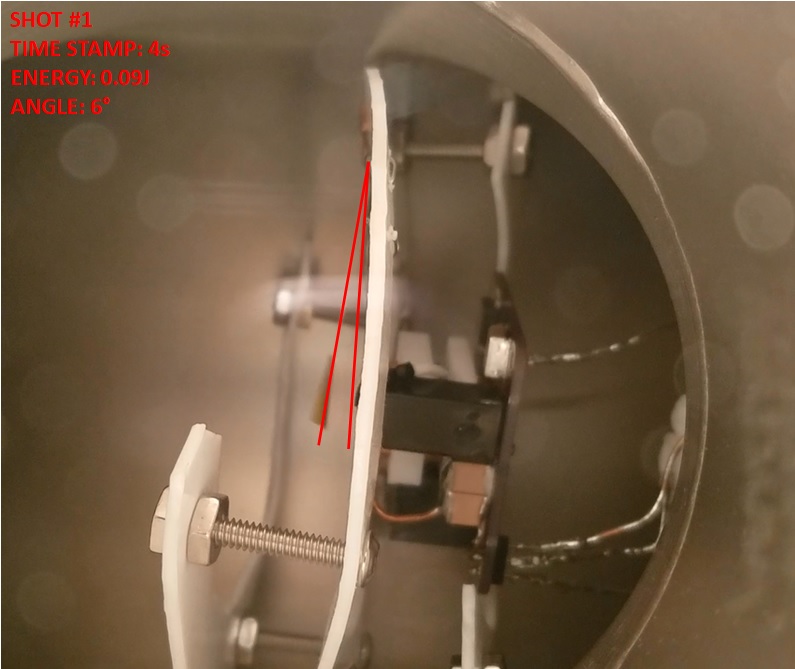Last Friday, September 13, 2019, I successfully completed the first qualifying round of impulse bit testing on the AIS-gPPT3-1C-T Integrated Propulsion Module with Teflon fuel! This was some highly anticipated data, and the start of a major testing phase for this thruster.
Over the course of the test, 80 shots were captured and logged – nearly four times as many shots as the first test for impulse bit data! While I am still working on the data, the results are promising. Using the micro-pendulum test stand, I am estimating that so far, the thruster is averaging around 0.65uN-s, with incredibly high shot-to-shot consistency. At 0.33Hz, this translates to an average thrust of about 0.22uN.
Taking a look back at the prior Gen-2 AIS-gPPT2-1C thruster data, I established a rough empirical scaling equation to predict impulse-bit performance based on main discharge energy. At a charge voltage of 944V, with a 0.2uF cap bank, this correlates to about 0.09J for the newest Gen 3 thruster – on the extreme low end of pulsed plasma thruster technology! The average scaling trend established from the prior test is
I-Bit=0.6744e^(1.2923*Energy)
Using this equation, with 0.09J I get an estimated average I-bit of around 0.76uN-s. Overall, considering all of the variables involved, and with the changes to the design from V2 to V3, this is pretty close to my estimated measurements! This means despite the design changes, overall for this particular thruster topology, scaling of impulse bit to pulse energy is fairly predictable. An example shot of the plasma plume striking the Kapton pendulum head, and resulting displacement can be seen below:
A full test report of the impulse-bit test with data and calculations will be available on the Reports page as I complete analysis. A video of part of the test can be seen below as well:
Unfortunately, at about 130 total logged shots, the thruster stopped firing. Later troubleshooting revealed that the main capacitor bank had shorted and failed. This was not completely unexpected, since I took a chance with non-pulse rated caps. However, it seems inevitable now that I need to migrate to high quality state of the art HV SMT pulse capacitors for this thruster to greatly improve lifetime, reliability, and performance. The new V3 board of the AIS-gPPT3 series thruster is currently underway, and should be ready for soldering and testing in about a week. I will have more updates on the new thruster module board design and details in the following posts!
With impulse-bit data now obtained for the thruster, completing a major milestone of testing for the Teflon fueled variant, the next critical phase of testing can begin, establishing ultimate lifetime of the thruster to qualify total impulse. This test will be carried out with the new V3 revised board with the upgraded pulse capacitors. The goal will be a minimum of 10k shots – lots of exciting developments coming up!


